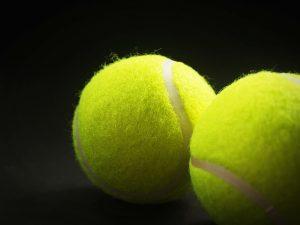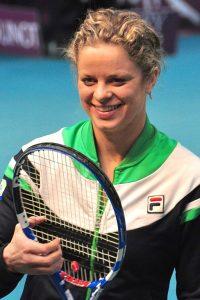We may earn money or products from the companies mentioned in this post.
Introduction

Tennis is a sport that requires consistent practice to improve skills, build muscle memory, and increase fitness levels However, finding a practice partner can be challenging due to scheduling conflicts and skill-level mismatches In such cases, practicing tennis alone can offer unique benefits including focused skill development and self-paced learning
Importance of practicing tennis regularly
Regular practice is crucial for tennis players who want to improve their skills Whether it’s working on stroke techniques or mastering footwork, dedicating time to practice allows players to refine their abilities and become more proficient on the court
Another advantage of regular tennis practice is the development of muscle memory By repeating strokes and movements consistently, players train their muscles to perform those actions automatically without conscious thought, resulting in more efficient and effective gameplay
In addition to skill improvement, practicing tennis regularly also helps increase fitness levels Tennis is a physically demanding sport that requires agility, endurance, and strength Regular practice sessions help players develop these attributes, leading to enhanced performance on the court
Challenges of finding a practice partner
While practicing with a partner can be beneficial for some aspects of the game like rallying and match play simulations, finding a reliable practice partner can be challenging Scheduling conflicts often arise due to different commitments and responsibilities that individuals have outside of tennis
Another challenge is the skill-level mismatch between potential practice partners It’s essential for both participants to be at similar skill levels in order to engage in productive practice sessions A significant difference in skill level can hinder progress as one player may feel overwhelmed while the other may not find the session challenging enough
Benefits of practicing tennis alone
Practicing tennis alone has its advantages when it comes to skill development Without the distractions of a partner, players can focus solely on their own techniques and areas that require improvement This allows for a more concentrated effort in refining specific aspects of the game
Furthermore, practicing alone allows players to set their own pace of learning They can spend more time on skills that they find challenging, without feeling rushed or held back by a partner’s abilities This self-paced approach fosters a deeper understanding of the game and enables players to progress at their own rate
In conclusion, regular practice is vital for tennis players looking to enhance their skills, build muscle memory, and improve fitness levels However, finding a consistent practice partner can be difficult due to scheduling conflicts and skill-level mismatches In such cases, practicing alone offers unique benefits like focused skill development and self-paced learning
Practice Techniques for Solo Tennis Players

Tennis is a sport that requires practice and dedication to improve your skills For solo players, it can sometimes be challenging to find ways to train effectively without a partner However, there are several practice techniques specifically designed for solo tennis players that can help you enhance your game
Serving Drills
Serving is one of the most crucial aspects of tennis, and improving your technique can have a significant impact on your overall performance Here are two serving drills that can help you refine your skills:
-
Technique improvement:
Focus on perfecting your toss consistency by practicing tossing the ball at the same height and position every time This drill will help you develop a consistent rhythm and timing in your serve -
Target Practice:
Set up targets on the court to aim for during your serves This will improve your placement accuracy and allow you to vary the direction of your serves
Groundstroke Drills
Become a master of groundstrokes by incorporating these drills into your solo training sessions:
-
Forehand and backhand techniques:
Practice both forehand and backhand shots individually, focusing on proper grip, swing technique, and follow-through Additionally, work on developing topspin and slice shots for added control -
Approach shots and volleys:
Improve your net play by practicing approach shots followed by volleys This drill will enhance not only your shot execution but also your footwork and positioning near the net
Footwork and Positioning
Maintaining good footwork and positioning on the court is essential for solo players Incorporate these drills to enhance your movement:
-
Split-step practice:
Work on perfecting your split-step, which is a small hop just before your opponent hits the ball This drill will help you anticipate shots and move quickly in any direction -
Lateral movement exercises:
Set up cones or markers on the court and practice moving laterally from side to side This drill will improve your agility and enable you to cover a wider range of shots
By incorporating these practice techniques into your training routine, you can continue to develop as a solo tennis player Remember, consistency and dedication are key to improving your skills, so make sure to set aside regular practice sessions and challenge yourself with these drills
Equipment and Tools for Solo Tennis Practice

When it comes to solo tennis practice, having the right equipment and tools can make all the difference in improving your skills on the court Whether you’re a beginner or an experienced player looking to sharpen your technique, these essential items will help you maximize your practice sessions
Ball Machines
Ball machines are a fantastic investment for solo players who want to simulate real game scenarios These machines offer adaptable speed, spin, and trajectory settings, allowing you to customize the shots according to your training needs Additionally, some advanced models even have programmable shot patterns that mimic different playing styles or specific shots like lobs or drop shots
Rebound Nets or Walls
Rebound nets or walls provide an excellent opportunity for solo practice without the need for a partner By hitting the ball against a wall or net, you can work on various aspects of your game, including footwork, timing, and accuracy The repetitive nature of this training method helps build muscle memory and improves consistency in your strokes When selecting a wall for training purposes, consider factors such as surface material and height to ensure optimal practice conditions
Tennis Ball Hoppers or Baskets
Tennis ball hoppers or baskets are invaluable tools that simplify collecting balls during practice sessions Instead of manually picking up each ball one by one, these convenient containers allow you to effortlessly gather multiple balls at once with ease Some hoppers even come with self-feeding options that enable automatic ball release at set intervals, allowing you to focus solely on your strokes without interruption
Mini Tennis Courts or Portable Nets
If you have limited space available but still want to engage in focused stroke repetition exercises, mini tennis courts or portable nets are the way to go These setups can be easily assembled in smaller areas, such as driveways or backyard spaces By practicing within a confined space, you can refine your technique and enhance your control over the ball This type of training also promotes quick reactions and improves shot accuracy
By utilizing these equipment and tools for solo tennis practice, you can take your game to new heights Whether you choose to invest in a ball machine for versatile training, utilize rebound walls for precise stroke development, rely on tennis ball hoppers for efficient ball collection, or set up mini courts for focused repetition – each tool offers unique benefits that contribute to your overall improvement as a player
Maintaining Motivation and Tracking Progress

When it comes to improving your tennis game, setting goals is crucial But not all goals are created equal It’s important to distinguish between short term and long term objectives Short term goals focus on immediate improvements, such as mastering a specific technique or increasing your speed on the court Long term goals, on the other hand, encompass broader achievements like winning a championship or reaching a certain ranking
To ensure consistent progress, it’s also essential to set skill-specific objectives Instead of just aiming to become a better player overall, break down your improvement areas into smaller, more manageable targets For instance, you might focus on improving your backhand stroke or enhancing your footwork By doing so, you’ll have clear benchmarks to work towards and track your progress more effectively
Tracking Performance
Tracking your performance is an invaluable tool for identifying areas for improvement and staying motivated Video analysis tools are particularly useful in this regard Recording yourself during practice sessions or matches allows you to review your technique and identify any flaws or weaknesses that need attention With visual feedback at hand, you can make adjustments and monitor how they impact your performance over time
In addition to video analysis, journaling can be an effective way to track progress Keeping a record of your training sessions and matches helps you reflect on what worked well and what needs improvement It allows you to identify patterns in your performance and provides valuable insights into areas that require extra attention
Staying Engaged
Practicing the same routine day after day can quickly lead to boredom and loss of motivation To stay engaged in your tennis journey, mix up your practice routines regularly Incorporate different drills and exercises that target various aspects of the game – from agility training to strategy development By varying your practice, you’ll keep things interesting and prevent stagnation
Challenging yourself with new drills is another effective way to maintain motivation Push beyond your comfort zone and introduce drills that challenge your skills and push your limits Whether it’s practicing difficult shots or simulating high-pressure situations, these challenges will not only keep you engaged but also accelerate your progress as a tennis player
Support and Motivation Sources
Building a community of like-minded individuals who share your passion for tennis can provide immense support and motivation along the way Online tennis communities offer a platform to connect with fellow players, exchange tips, share experiences, and celebrate successes together Surrounding yourself with individuals who understand the challenges and triumphs of the sport can be a powerful source of inspiration
In addition to online communities, virtual coaching options have become increasingly popular in recent years Working with a virtual coach allows you to receive personalized guidance regardless of location or time constraints Virtual coaching sessions can provide valuable feedback on technique, strategy, and overall performance, helping you stay motivated and make continuous progress towards your goals
Useful Links

Is It Possible To Learn Tennis By Yourself?
Guide to Tennis Drills: 6 Types of Practice Exercises – 2023
10 Fun Tennis Drills You Can Practice Without A Court
Can You Learn Tennis By Yourself? (Easy Guide)
How to Practice Tennis Indoors or at Home Without a …
10 Ways to Practise Tennis at Home • TennisAvid
How To Practice Tennis Alone – Complete Guide
How To Practice Tennis Alone In 5 Simple Steps in 2023
How To Practice Tennis By Yourself – 5 Different Ways
Eight steps to bring routines into the modern era
How can I practice tennis by myself?
How to practice tennis alone?
Do You Need Another Person to Learn Tennis?
Need help: Solo practice drills, exercises, etc. : r/tennis
3 Best Ways to Get Better at Tennis
How can I practice Tennis at home – Singapore
Effective Tennis Practice
How to Practice Tennis by Yourself at Home? [4 Best Training]
9 Best Tennis Drills You Can Do Alone (On & Off The Court)






